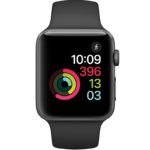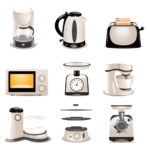Alcohol and Depression Treatment for Alcoholism and Depression
In addition it is important to obtain family history of mood disorder and life time diagnosis of depression since the presence of such histories puts the individual at a greater risk of developing major depression. These disorders are characterized by disrupted mood (e.g., low, numb, or irritable), along with an array of cognitive (e.g., feelings of worthlessness and difficulty concentrating) and physical (e.g., fatigue and lack of energy) symptoms. In the present review, the number of participants that reported use of alcohol was not used as a primary outcome as we planned in the Protocol (see Primary outcomes). Whenever possible, we combined togethar these outcomes and used them to evaluate the effects of antidepressants in alcohol consumption.
- Even if you have failed previously and relapsed, or are in the middle of a difficult crisis, we stand ready to support you.
- Our experienced medical professionals at We Level Up alcohol detox provide a safe and supportive environment, using evidence-based protocols to manage these symptoms and monitor overall health.
- For example, the criterion of legal problems related to alcohol was removed, and the criterion of alcohol craving was added.
- RecoveryWorks highlights the notion that while recovery enhances employment prospects, employment and retention in the workplace bolsters the recovery journey just as well.
Instead of waking up refreshed, many people experience restlessness, frequent waking, or early-morning grogginess. Alcohol changes brain chemistry in ways that interfere with how emotions are managed. It lowers essential neurotransmitters like serotonin and norepinephrine, which play a significant role in stabilizing mood.
Valley Spring Recovery Center
The first three reviews were not specifically designed for evaluating the efficacy and safety of antidepressants for alcohol‐dependent people. The fourth review adopted very selective inclusion criteria (studies reporting data over at least eight weeks; studies reporting a change in depression scales). All the reviews did not apply stringent Cochrane criteria for systematic reviews and did not consider dropouts and adverse effects as a primary outcome.
Major depression disorder and alcohol dependence are among the most prevalent mental disorders worldwide, and their co‐occurrence is common (APA 2013; Grant 1995; Grant 2015; Pettinati 2013). Diagnosis requires the presence of at least five of these symptoms (APA 2000; APA 2013). Alcohol dependence is characterized by bouts of excessive drinking, and inability to control alcohol consumption despite the awareness of its negative consequences (APA 2013).
Lifestyle + Supportive Care
We addressed within-study correlation of effects from multiarm trials through the netmeta procedures for reweighting all comparisons of each multiarm trial 35,36. We assumed a constant heterogeneity variance across all comparisons in each network, defined via a generalized methods of moments estimate of the between-studies variance 37. Keep in mind that alcohol is a depressant of the central nervous system that slows down the entire body.
Mental health disorders that commonly co-occur with AUD
We ultimately included 98 citations reporting 36 studies that randomized a total of 2,729 participants (see Fig 1). All data underlying the findings in this review (including GRADE assessments of confidence in effect estimates) can be alcohol and depression found in S2 Appendix. However, it does indicate that alcohol can slow down bodily symptoms and change the way your brain thinks, feel emotions, and regulate mood.
While rehab facilities help treat addiction, not all will offer the services you may need for overcoming a co-occurring condition. For example, some facilities may specialize in certain conditions and offer therapies tailored to specific addictions. Other programs are more generalized, providing services to a wide range of addictions. A type of psychotherapy, cognitive behavioral therapy helps people learn how to replace negative thoughts with positive and uplifting feelings. CBT helps teach people how to identify potential triggers, find ways to cope with urges to drink and set realistic goals. Cognitive behavioral therapy generally starts in a rehab setting and can be continued after treatment with the help of an alcohol counselor.
FDA Approves Caplyta for Adjunctive Treatment of Major Depressive Disorder
During episodes of depression, you may feel constant and ever-present negative symptoms. Polysubstance use was noted, with 50% of the participants using tobacco while 21.3% of them were using cannabis. Screen4Success provides an easy way for parents and caregivers to identify areas where their children may benefit from additional support. A Massachusetts General Hospital research team studies the impact of regulations on pregnant and postpartum individuals with opioid use disorder (OUD).
Contact us today to schedule an initial assessment or to learn more about our services. Whether you are seeking intensive outpatient care or simply need guidance on your drug addiction journey, we are here to help. Depressants are A type of drug that slows down brain activity, which causes the muscles to relax and calms and soothes a person. Alcohol is a depressant substance; depressant substances reduce arousal and stimulation. Typical depressant drugs like alcohol affect the central nervous system, slowing down the messages between the brain and body, according to 1998 research from Brands B, Sproule B, Marshman J, in the Ontario Addiction Research Foundation. Naltrexone, Acamprosate, and disulfiram are also FDA-approved medications that can help curb alcohol cravings.
Roy‐Byrne 2000 published data only
Arguably, studies using diagnostic criteria that pre-date DSM III should not be included. CBT, cognitive behavioral therapy; DSM, Diagnostic and Statistical Manual of Mental Disorders; IPT, interpersonal therapy; PHQ, Patient Health Questionnaire; SP, supportive psychotherapy; SUD, substance use disorder. A crucial aspect of NMAs involves visualizing the interventions that have been evaluated for a population of interest as forming a network in which the interventions are represented by dots (or “nodes”) and comparisons between interventions are represented by lines (or “edges”) in a diagram. After completing https://blogpulseguru.com/out-of-prison-but-then-where-canadas-halfway/ the search but before extracting and analyzing outcome data, we assigned identified interventions to nodes in our network via consensus among the review team and external advisers, using a preregistered list of intervention nodes (see S1 Text) as a guide 24. Valley Spring Recovery Center offers comprehensive addiction and mental health treatment services. It’s also important to note the phenomenon of “post-acute withdrawal syndrome” (PAWS), which can occur in some individuals who have stopped drinking.
These programs allow individuals to engage in therapy and support while maintaining their daily routines, offering flexibility and facilitating recovery integration into daily life. The American Journal of Psychiatry notes that structured outpatient programs can effectively manage AUD and depression when they provide sufficient therapeutic intensity (Ouimette et al., 1998). Moreover, chronic alcohol use can lead to physiological changes in the brain that may exacerbate depressive symptoms. It can also interfere with the effectiveness of antidepressant medications, making depression harder to treat. It is important to note that medications for alcohol use disorder are a first-line treatment. If you’re dealing with severe alcohol withdrawal symptoms, such as anxiety, insomnia, nausea, and hallucinations, among others, then your doctor may suggest medications such as chlordiazepoxide or other benzodiazepines.
The Recovery Village
While alcohol itself isn’t the single “cause” of depression, its effects on brain chemistry, amphetamine addiction treatment sleep, and coping make it an influential contributor. Someone may start drinking to ease stress or sadness, but over time, the drinking can create or worsen the very symptoms they were trying to avoid. This vicious cycle of self-medication makes the emotional distress of depression more severe and also makes it harder to break free from alcohol’s grip. Alcohol provides temporary numbness, but it ultimately prevents individuals from confronting the core issues of their depression, such as unresolved trauma, low self-worth, or chronic stress. For professionals, the stakes are high—this cycle impacts personal well-being and can also affect career performance, productivity, and long-term career prospects. 4) The table summarizing risk of bias across studies (eTable 4) should be included in the body of the manuscript instead of the appendix.

















